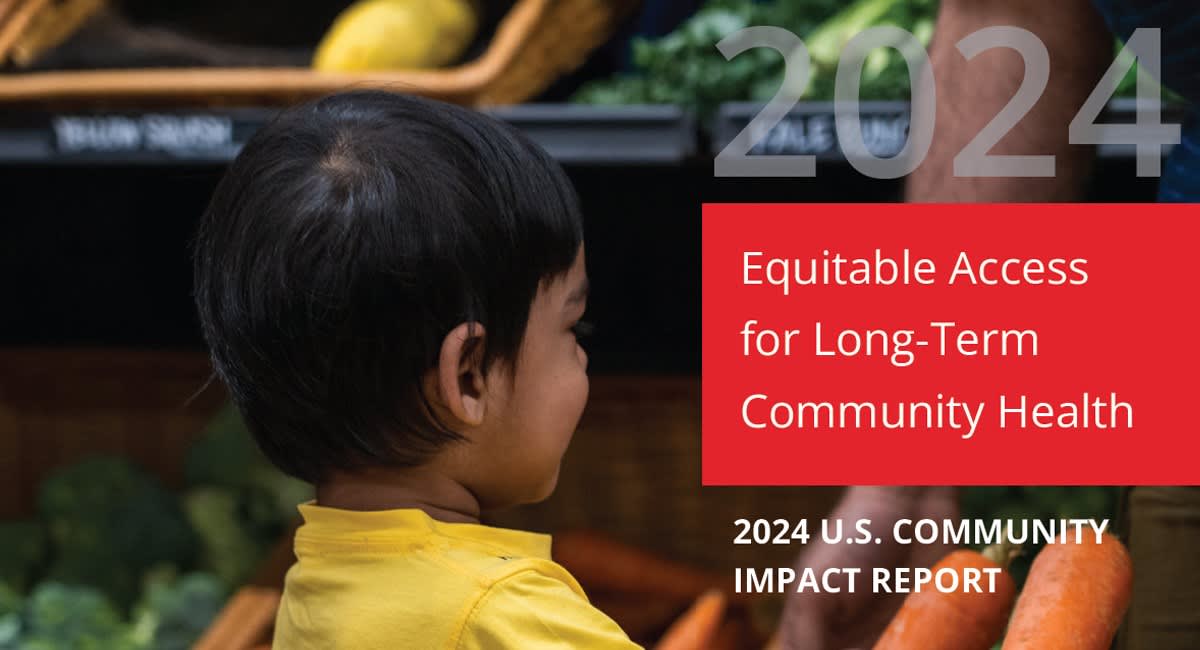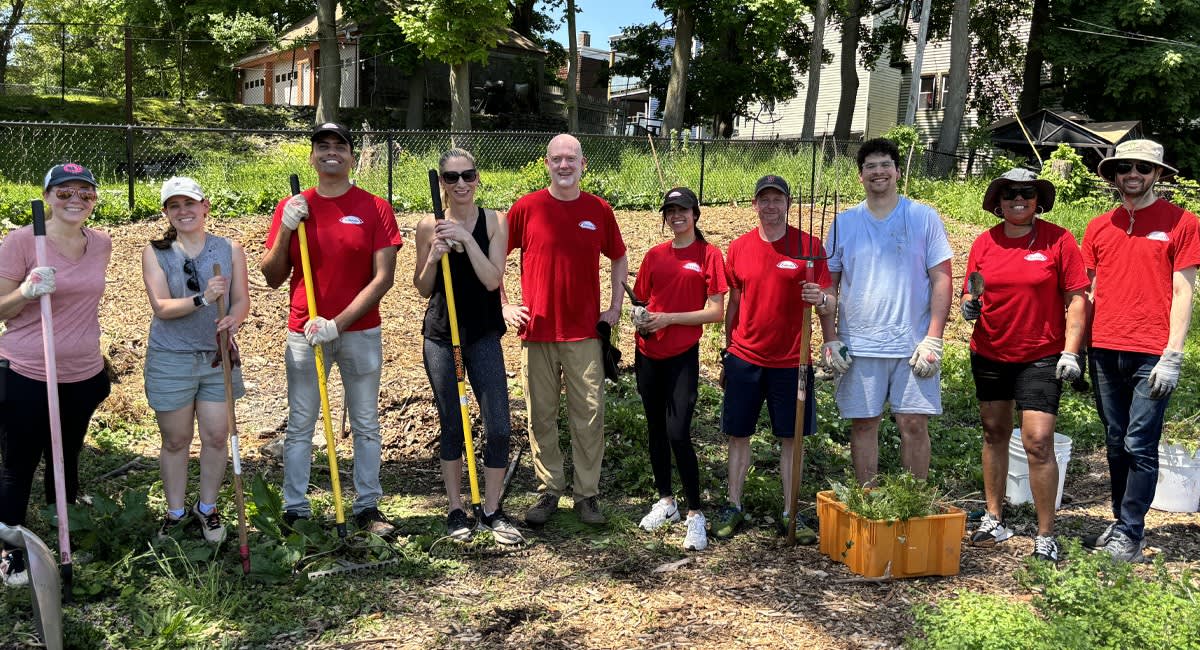U.S. Community Impact Report | Bridging Health, Equity & Opportunity

Community Impact Report
Driving equitable access for long-term community health in the U.S.
Rooted in our centuries-old purpose of creating better health for people and a brighter future for the world, Takeda’s focus is on discovering and delivering transformative medicines. Innovative therapies are a critical component of improving health for all people. But research shows that social conditions – like access to quality health care, nutritious food and education – determine 80% of a person’s overall health and wellness.1
Find out how we’re working to address these social determinants of health in partnership with U.S. community partners.
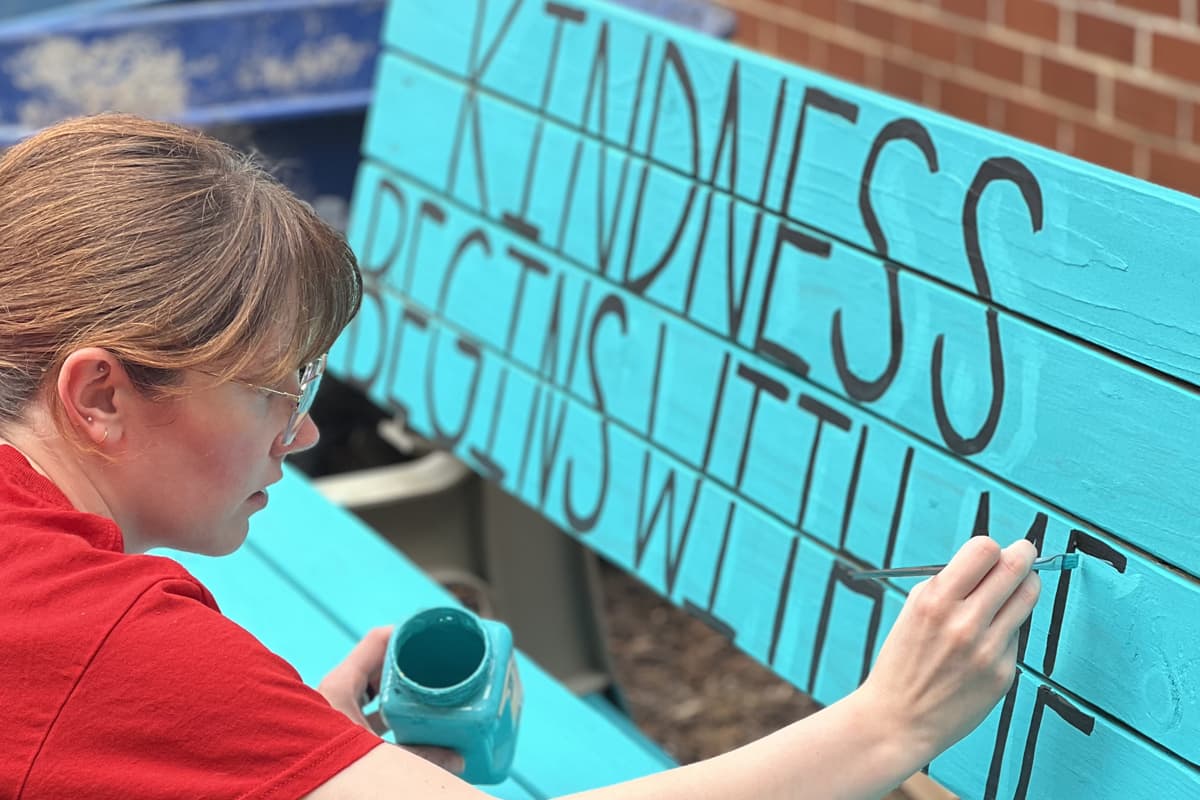
Takeda employees build an outdoor math learning lab with Out Teach at an elementary school in Georgia.
Our community-based approach
““We build long-term partnerships with community leaders across the U.S. to help create positive, lasting change in our communities.”
Holistic efforts to drive sustainable impact
As the community needs evolve, so does our strategy. This is why we have created a new U.S. Community Health group that brings together the health equity, corporate social responsibility and philanthropy teams. By bringing these teams together – who focus on creating equitable access to high-quality health care, nutritious food, and education in science, technology, engineering and math (STEM) – we’re taking a more holistic approach to meeting the needs of our communities, and will ultimately achieve more measurable, sustainable impact.

47
external partnerships with community organizations in the U.S.

$18.1
million investment in external community partners in the U.S.

10.8
million community members reached through U.S. community partners
Our focus areas
Access to high-quality health care
Addressing health inequities is best done locally, with personalized interactions tailored to individual or family needs. As such, our strategy to improve access to high-quality health care centers on partnering with community organizations that train, support and strategically deploy Community Health Workers.
Community Health Workers play a vital role in bridging the gap between health care providers and underserved communities. They provide culturally competent care, health education and support. Whether through shared language, culture or lived experience, Community Health Workers build trust with community members to better understand the barriers they might face and how they can overcome those barriers to live healthier lives. Their dedication not only improves individual health outcomes but also strengthens the overall health of our communities.
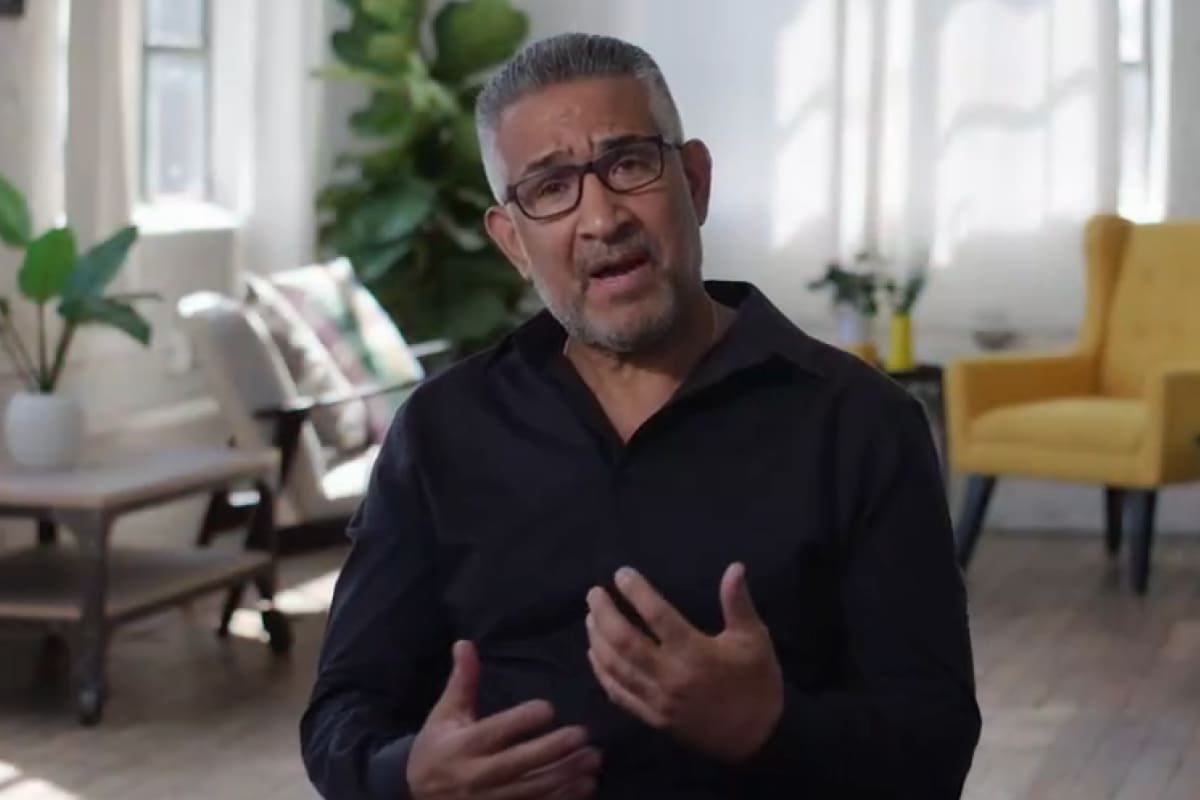
Deep Dive: What does a Community Health Worker do?
Meet Joaquin Rodriguez, a Community Health Worker in Springfield, Massachusetts. He acts as a liaison between members of the community and the public health departments, companies and hospitals providing them with services. Learn more in this video by Discovery Education, a Takeda community partner dedicated to advancing health literacy and education.
Access to nutritious food
Access to nutritious and culturally appropriate food is a critical component of a healthy, thriving community. Benefits include:
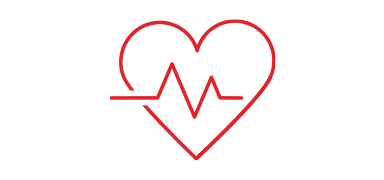
Individual health outcomes: Diet and nutrition can affect progression and outcomes in serious diseases2 such as cancer, diabetes, cardiovascular disease and autoimmune diseases. In fact, medically tailored meals – prescribed by a health care provider and customized by a registered dietitian – can be an integral part of managing these conditions.
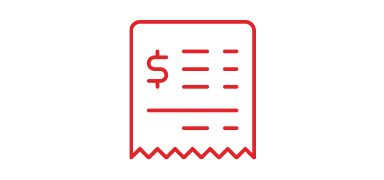
Reduced cost of health care: Research shows that when the quality of nutrition goes up, people’s overall health care expenses go down, demonstrating that nutritious food complements modern medicine, and relieves the cost burden from both the patient and the health care system ($53 billion in avoidable expenses each year, says Feeding America).
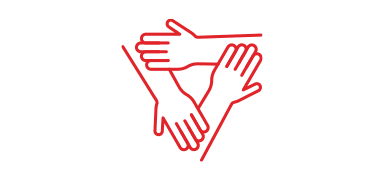
Community health: Food brings people together, creating cultural and communal gatherings that can enhance the overall wellbeing of a neighborhood or town.
However, food insecurity and lack of access to nutritious foods impact a large percentage of people in the U.S. – and that percentage is even greater for those who identify as Black or Latino.
People in the U.S. who lack sufficient access to nutritious foods:3
- 14% (1 in 6) – total U.S. population
- 23% (1 in 5) – people in U.S. who identify as Black
21% (1 in 5) – people in U.S. who identify as Latino
Our focus is on setting a table for all – regardless of where they live, their racial or ethnic background or their income level.

Deep Dive: The Urban Farming Institute grows Bostonians’ food access and well-being
Meet Apolo Cátala – a former attorney and self-identified “workaholic” struggling with high blood pressure and diabetes – whose life was transformed by discovering the benefits that nutritious food has on health, community and the planet. Now a graduate of the Urban Farming Institute’s farmer training program, Cátala is a farm manager with significantly improved health. He has deepened his ties to the local community through regularly gathering with neighbors at the Urban Farming Institute farmstand, and he has reconnected with his cultural heritage through growing and cooking with aji dulce, a pepper essential to many Puerto Rican dishes that can be difficult to access in the U.S.
Access to STEM education
High-quality and engaging educational experiences in science, technology, engineering and mathematics (STEM) can have a profound impact on the health of individuals and communities by providing:

Job opportunities: STEM education unlocks doors to meaningful, stable careers that provide long-term financial security and can build generational wealth.

Better health: Research shows people with greater access to higher levels of education are more likely to live healthier and longer lives.4
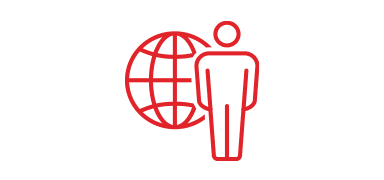
Societal benefits: Building the next generation of STEM leaders is critical to cultivate a future workforce equipped with the necessary skills to address the world’s most pressing challenges.
Unfortunately, access to STEM education is not equitable for individuals of all backgrounds and demographics. Math proficiency among students is a stark example. According to the 2024 National Assessment for Educational Progress, 72% of eighth grade students were deemed not proficient in math.5 In addition, a significantly greater percentage of low-income students, as well as Black and Hispanic students, were deemed not proficient in math compared to their white peers.
To address these inequities, we partner with STEM nonprofits to provide resources, mentorship and hands-on learning experiences to students underrepresented in STEM fields and in underserved communities. Our support for these partner organizations helps ignite curiosity and ensures that all students have access to a robust STEM education, giving them the opportunity to explore their full potential.
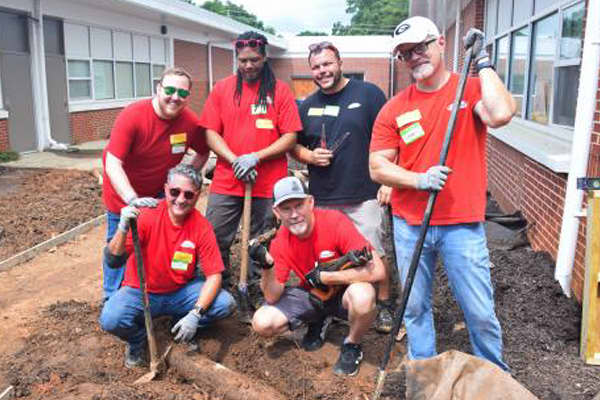
Deep Dive: Building an Outdoor Learning Lab
Get a behind-the-scenes glimpse of the Takeda team’s volunteer efforts to build a new Out Teach outdoor learning lab at Benteen Elementary School in Atlanta.
Partner stories

Remote Area Medical
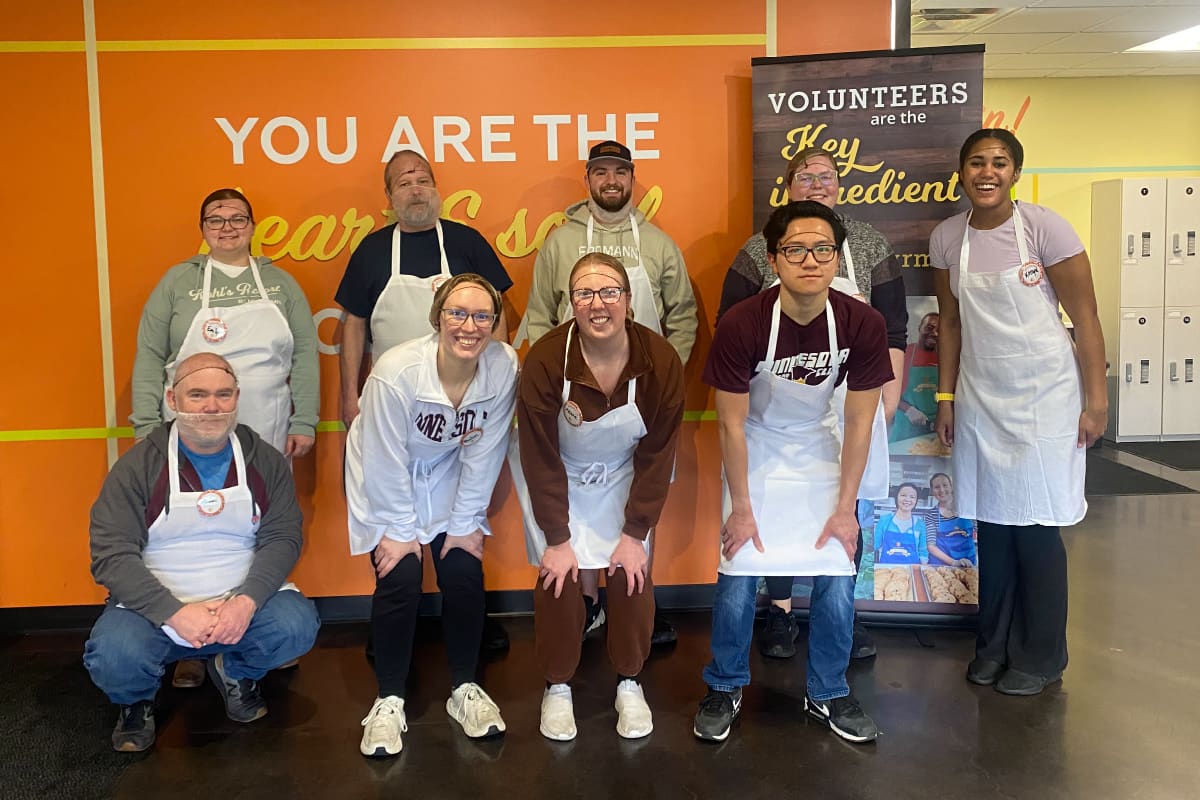
Open Arms of Minnesota
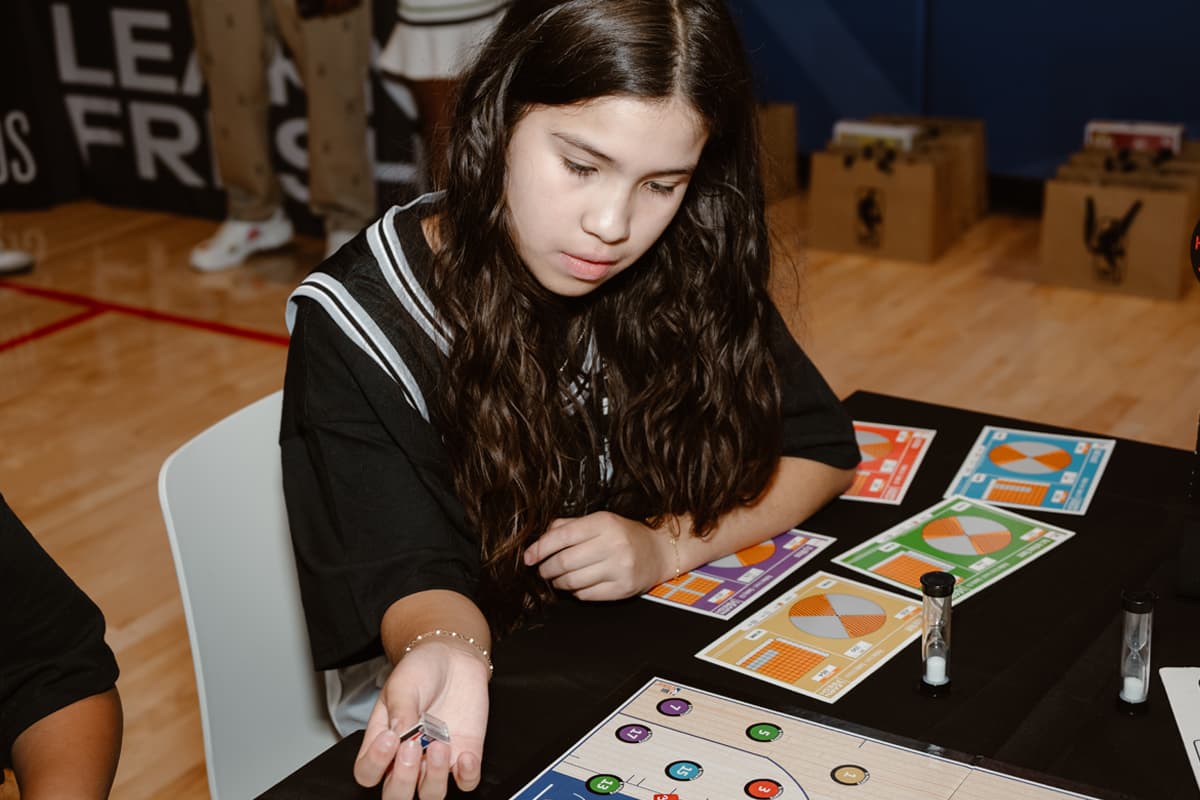
Learn Fresh
References
- U.S. Department of Health and Human Services. Healthy People 2030.
- https://pmc.ncbi.nlm.nih.gov/articles/PMC9266141/
- Dewey, A., Harris, V., Hake, M., & Engelhard, E. (2024). Map the Meal Gap 2024: An Analysis of County and Congressional District Food Insecurity and County Food Cost in the United States in 2022. Feeding America. Accessed on https://www.acfb.org/facts-and-stats/.
- U.S. Department of Health and Human Services. Healthy People 2030.
- https://www.nationsreportcard.gov/reports/mathematics/2024/g4_8/national-trends/?grade=8

